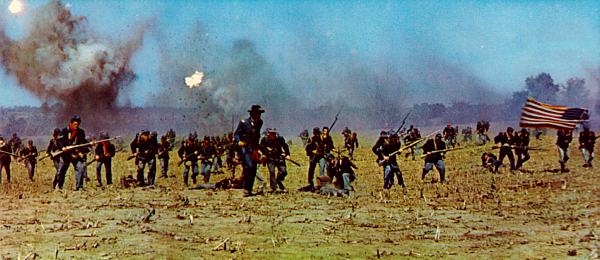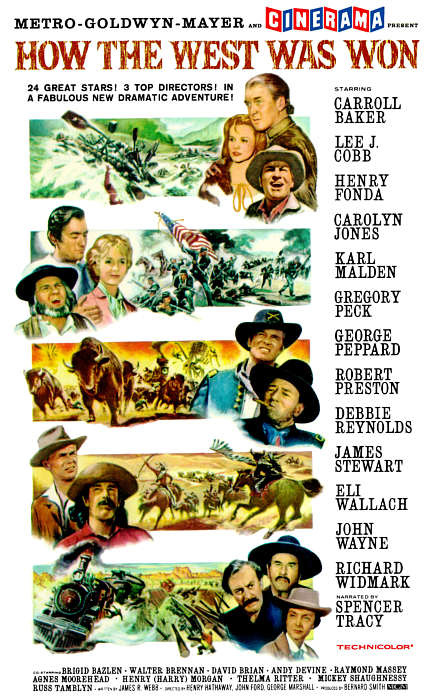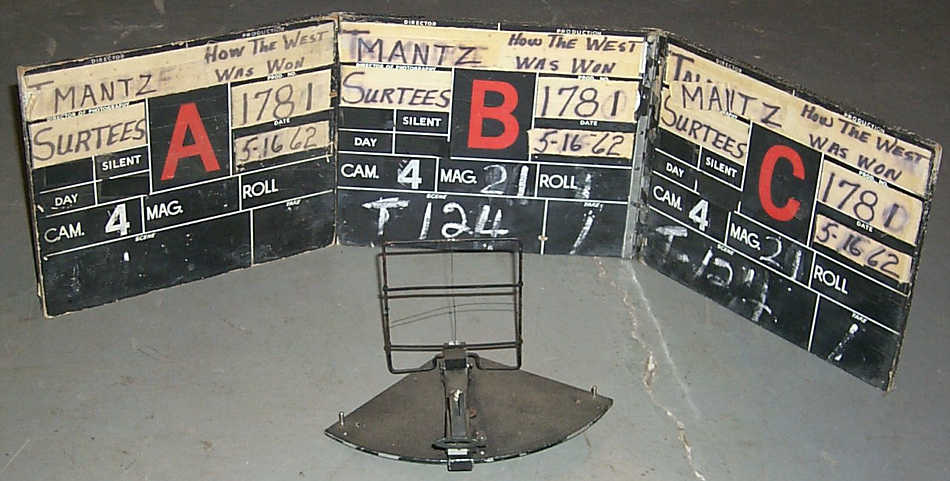|
|
|
|
|
|
|
|
|
|
|
|
|
|
|
|
|
|
|
|
|
|
|
|
|
|
|
|
|
|
Three strips of film from the opening sequence of How The West Was Won. This photograph, taken in August, 1996, shows the stability of the remarkable 1962 Technicolor imbibition prints that Metro-Goldwyn-Mayer used for the three strip version of both this film and The Wonderful World of the Brothers Grimm. Prints for This Is Cinerama were done in the "IB" dye transfer process for an early 1960's re-release. Earlier prints of This Is Cinerama, and virtually all prints of the other Cinerama travelogues, were produced on Eastmancolor film which has faded into salmon colored oblivion.
Cinerama frames courtesy of John Mitchell
A scene from How The West Was Won reproduced from a publicity still, which was reproduced from a camera negative. Note how invisible the panel match lines are, and how well the colors blend. The image is, and should be, perfect. That's because the original negative was part of M-G-M's Raintree County, photographed in MGM Camera 65 (Ultra Panavision) in 1957. The Civil War Segment of the film is about 75% footage from Raintree County, leaving the balance to director John Ford, and he did a pretty lousy job. The exact same scenes were later reused in 1965, but flipped left to right and cropped severely for Universal's flat 35mm Shenandoah, which in no way deserves Maltin's 3 stars.
These two frames from Seven Wonders of the World illustrate the instability of the Eastmancolor prints of the mid 1950's. In the left picture, Lowell Thomas appears red enough to be called into the McCarthy hearings. While the image on the right has not faded to the extent of the other, its film base has yellowed to a far greater degree. At the present time, Technicolor Corporation is in pilot production of prints using a new imbibition system. The resurrection of IB dye transfer printing, coupled with the Federally mandated change from acetate film base to polyester, (which has unique problems of its own), will make it possible for carefully cared for prints to last in excess of 100 years.
Cinerama frames courtesy of John Mitchell
One of the few good reasons to see The Wonderful World of the Brothers Grimm
Cinerama Camera 4's Swansong The last shot made by Cinerama camera 4 was an aerial scene made by pilot Paul Mantz and the photography was handled by Robert L. Surtees, who did a fair number of uncredited shots in How The West Was Won. The slate also shows us that Mantz' partner, Frank Tallman, also did some aerial shots for the production on the previous day. Sitting on the floor in front of the slate is a simple "sports" finder used to make rough setups or for moving shots where an optical finder would be difficult to use.
Courtesy of Carey Williams
You are on Page 4 of
E-mail the author
CLICK HERE©1996 - 2010 The American WideScreen Museum
http://www.widescreenmuseum.com
Martin Hart, Curator




